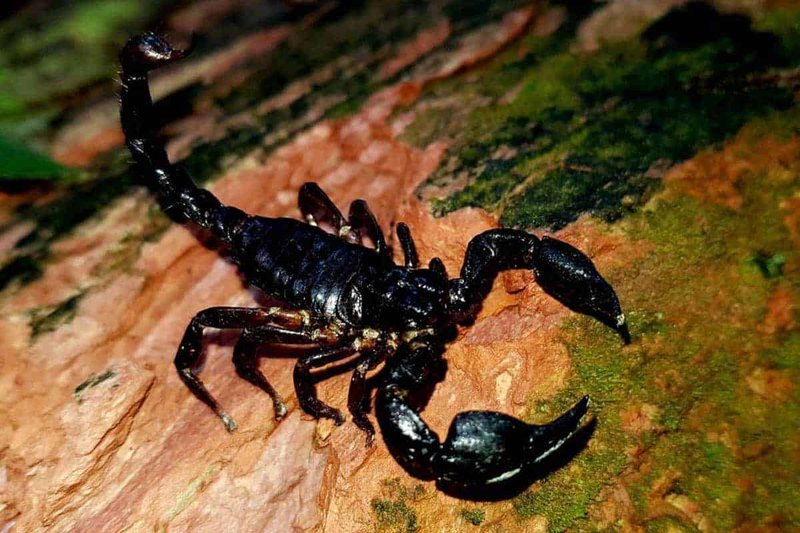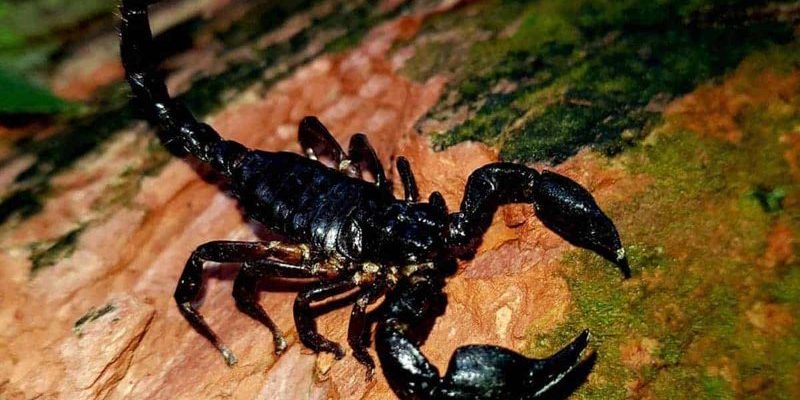
Imagine sitting across from a friend at a café, chatting about these intriguing arachnids. You might find yourself exploring not just their biology, but also their behavior, habitat, and their role in the ecosystem. If you’re curious about the Asian Forest Scorpion, then you’re in for a treat! This article will delve into some interesting facts about these creatures, helping you understand why they are more than just something you’d see in a horror movie.
What is the Asian Forest Scorpion?
The Asian Forest Scorpion (Heterometrus spp.) is a member of the family Scorpionidae and is primarily found in Southeast Asia, including countries like Thailand, Malaysia, and Indonesia. Known for their robust bodies and large claws, these scorpions can grow up to 8 inches long. You might think of them as the gentle giants of the scorpion world, as their venom is relatively mild compared to other species.
These scorpions are nocturnal, meaning they do most of their hunting at night. Imagine them creeping through the underbrush, using their impressive sense of smell and touch to find food. They primarily feed on insects and other small invertebrates, which makes them crucial for controlling these populations in their environment.
Habitat and Distribution
Where do you find these fascinating creatures? The Asian Forest Scorpion truly thrives in humid, tropical forests. They prefer environments with plenty of leaf litter and dense vegetation, which not only provides shelter but also hunting grounds. Picture a lush forest floor, dappled with sunlight filtering through the trees—that’s the perfect home for these scorpions.
Their distribution spans across various Southeast Asian countries, making them a common sight in places with warm, moist climates. You might even find them in some pet stores, as they’ve become popular in the exotic pet trade. However, they need special care, so it’s wise to do your homework before considering one as a pet.
Physical Characteristics
If you’ve ever laid eyes on an Asian Forest Scorpion, you know they have a striking appearance. Their dark, glossy exoskeleton can be mesmerizing, almost like polished armor. One of their standout features are their large pincers, which they use for hunting and self-defense. Imagine a tiny knight, ready to ward off dangers with its impressive claws!
Their bodies are segmented, and they possess a long, slender tail that ends with a stinger. But here’s the thing: while their sting can be painful, it’s usually not life-threatening to humans. Most people describe the sensation as similar to a bee sting. This relatively mild venom is a defense mechanism, allowing them to capture prey and deter larger predators.
Behavior and Social Structure
You might be surprised to learn that Asian Forest Scorpions can be quite social. Unlike many other scorpion species that prefer solitude, these scorpions are often found in groups, especially during the mating season. Picture a few of them huddled together, coexisting peacefully in their shared environment.
Their communication is mostly non-verbal, relying on pheromones and subtle body movements. When mating, the male and female engage in a dance-like ritual, where they grasp each other’s pincers and move around in a circle. It’s a fascinating sight, showcasing their unique courtship behaviors.
Diet and Hunting Techniques
What do these scorpions eat, you ask? The Asian Forest Scorpion is a hunter at heart. They typically feast on insects like crickets, roaches, and other small invertebrates. Imagine them stealthily stalking their prey, using a combination of patience and speed to ambush and capture their next meal.
Their hunting technique often involves waiting motionless for an unsuspecting insect to wander too close. Once the moment is right, they strike with remarkable agility. The pincers grab hold of the prey, while the tail delivers a quick sting to immobilize it. This precise method showcases their role as predators in the ecosystem, helping to keep insect populations in check.
Conservation and Threats
Like many creatures, Asian Forest Scorpions face threats in their natural habitat. Deforestation and habitat destruction for agriculture and urban development are significant concerns. As their natural environment shrinks, so does their population.
Conservation efforts are essential to ensure these amazing creatures don’t disappear. Supporting wildlife protection initiatives and keeping habitats intact can help maintain balanced ecosystems where these scorpions—and many other species—can thrive.
Why They Matter in Our Ecosystem
You might be wondering, “Why should I care about scorpions?” Well, the Asian Forest Scorpion plays a vital role in maintaining the health of its ecosystem. By controlling insect populations, they help prevent overpopulation, which can lead to a range of problems, including crop damage and the spread of disease.
Their presence in the food web provides nourishment for larger predators, including birds and mammals. So, while they might seem scary, these scorpions are crucial players in their environments, supporting a balanced ecosystem.
In conclusion, the Asian Forest Scorpion is more than just a creature to fear; it’s a marvel of nature, showcasing resilience and adaptability. With their unique behaviors, fascinating biology, and significant role in the ecosystem, they remind us that every living being has its place in the world. The next time you think about scorpions, I hope you picture them with a bit more wonder and appreciation!

